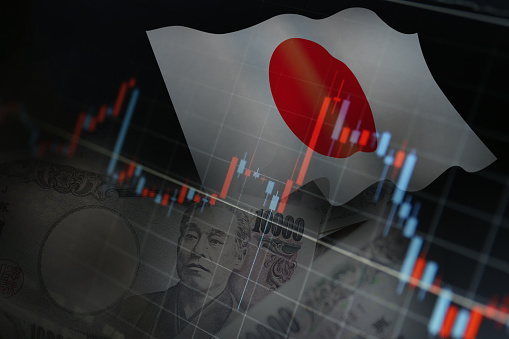Reviving the Japanese Economy
Japan’s economy is a textbook example of a producer economy. The economy is heavily dependent on agriculture, a few industries, and high prices. To revive Japan’s economy, its employment system needs to change. Besides reforming government employment systems, it must also modernize its accounting methods and deregulation.
Japan’s economy is a pure example of a producer economic state
A recent article in the Washington Post highlights three serious structural problems with Japan’s economic model. These include a declining birthrate, a massive government debt that exceeds 200 percent of GDP, and a fundamental dependence on export-led growth. Samuelson concludes that these problems have radically changed the nature of the Japanese economy and their national condition. To address these problems, Japan will need to redefine its definition of prosperity.
The Japanese economy is still struggling with the fallout from the asset-price bubble that burst in the late 1980s. By late 1989, the benchmark Nikkei index was at one-third of its peak, and the price of residential and commercial property had fallen nearly 70 percent. In addition, most financial institutions held large quantities of bad debt, and were forced to be cautious when extending new loans. This caused several major financial institutions to go bankrupt in the second half of the 1990s, further damaging the economy.
As a producer economy, Japan’s economic model has been criticized for sacrificing other goals, particularly in the early 1990s. It pushed aside many other goals in pursuit of its goal of catching up and eventually surpassing the U.S. economy. While many of the critiques of Japan’s economic model are highly critical of the Japanese government, many others have pointed to the role of large corporations and a highly educated workforce in the country’s economic success. These three pillars of the Japanese economy cooperated to create a very concentrated development strategy.
It is characterized by high prices
The Japanese economy is characterized by high prices, a trend which has been in place for many years. This is largely due to a lack of domestic energy resources. The country relies on foreign oil and gas imports for its energy needs. Although Japan has taken steps to promote energy conservation, its dependence on petroleum still remains high, and the country has introduced alternatives to petroleum. As a result, its dependence on petroleum has decreased from 75.5 percent in fiscal 1973 to 40.3 percent in fiscal 2010. However, since the Great East Japan Earthquake in 2011, Japan’s reliance on fossil fuels has increased. In fiscal 2012, its dependence on petroleum increased to 44.5 percent, an increase of 6.7% compared to the previous fiscal year.
The Japanese economy relies heavily on foreign trade. Exports account for 16 per cent of the country’s GDP, and key exports include machinery, manufactured goods, and vehicles. The United States, China, and Republic of Korea are the largest export destinations for Japanese products. However, since the yen has depreciated significantly, export growth has been slow.
Although Japan’s economy grew rapidly at the end of the 1980s, the economic situation has since slowed down significantly. The collapse of the asset price bubble led to Japan running large budget deficits, adding trillions of Yen to its financial system and funding large public works projects.
It is reliant on a small number of industries
The Japanese economy is highly reliant on a handful of industries. The Japanese are well aware of their reliance on foreign products, and while they don’t focus on global issues, they are taking them seriously. It would be a mistake to think that a successful Japanese company will always be able to avoid global issues. Instead, Japanese business leaders need to consider the impact that their actions will have on national interest.
The Japanese government is concerned about regional security imbalances and China’s growing assertiveness, and has identified the situation in Taiwan as a national security threat. Some LDP representatives have even suggested the deployment of Self-Defense Forces. Meanwhile, Prime Minister Kishida has announced new economic policy measures centered on wealth redistribution and economic growth. He has also announced measures to foster R&D initiatives in the technological sector.
As with most other countries, Japan’s economy relies on foreign trade. The country exports approximately 16 percent of its GDP. Its exports include electronics, automobiles, and other manufactured goods. In 2015-16, the largest export destinations were the United States, China, and the Republic of Korea. However, despite these benefits, export growth remains sluggish.
A new economic system is necessary for Japan to revive its economy. In addition to implementing new policies, the country must also undertake structural reforms to rebuild its confidence in the future. Such fundamental structural reforms will require a strong political leadership and an examination of existing systems.
It is reliant on agriculture
A large proportion of the Japanese economy is dependent on agriculture, especially for rice and dairy products. Despite this, the country’s agricultural output increased in the last year, up 7.2 percent from the previous year. Compared to other industrialized nations, Japan has one of the lowest agricultural self-sufficiency ratios.
The economic growth of Japan is linked to a number of factors, such as increased worker productivity, higher capital per worker, an educated labor force, and supportive government policies. While the country’s miracle economy of the 1960s and ’70s may have passed, economic growth has lifted the country’s standard of living to levels far higher than those in the United States. In addition, income is more evenly distributed in Japan than in the United States.
However, Japan has limited arable land. It has long been concerned about food shortages. This has led to government policies to defend the agricultural sector and move toward self-sufficiency in food. The agricultural lobby has remained a solid vote bank in politics, and the Liberal Democratic Party has been able to protect farmers from economic headwinds.
While the Japanese economy has made significant progress since the Great East Japan Earthquake, it has not been able to escape the effects of a slowing Chinese economy and a lull in global demand for information-related goods. However, the economy has been buoyed by rising employment levels and company profits.
It is reliant on government
In Japan, the government plays a key role in economic management. It exerts a strong influence on business, consults with businesses continuously, and has a deep involvement in banking and other sectors of the economy. Its bureaucrats have broad discretionary powers and provide administrative guidance to business.
However, the Japanese economy has been slowing in recent years, largely due to the collapse of the asset price bubble. At the same time, the government ran massive budget deficits, adding trillions of Yen to its financial system and financing massive public works programs. This is reflected in a recent Pew Research Center survey of 1,016 Japanese.
After gaining power in the recent general election, the new government in Japan is focused on the future of Japan’s economy. Prime Minister Yoshihide Kishida’s platform calls for more growth and better distribution of wealth. In addition, he wants to reduce the costs of daycare and increase workers’ wages. The next step for the new government is passing a budget through the parliament.
The rapid economic growth in Japan has been characterized by a shift from traditional to modern manufacturing and processing industries. This shift in emphasis has resulted in an increase in quality of labor input and a decrease in the dependence on agriculture. Furthermore, increased investment in manufacturing has gone hand in hand with improvements in education and health. Furthermore, government investment in infrastructure has been accompanied by an increase in social capital.
It faces challenges
The Japanese economy faces a number of challenges. As the second largest economy in the developed world, it faces numerous issues that are both interrelated and different from the challenges facing other OECD countries. Furthermore, these problems have global implications. In particular, they have repercussions for the Asian region and beyond.
For starters, Japan’s debt is extremely high. As a result, the country’s government needs to increase its revenue to pay off its debt. Japan’s debt-to-GDP ratio is higher than most of its peers. This is an indicator of weak demand in Japan. This can be seen through the fact that Japanese consumers consume only a small fraction of their income. This low consumption level requires a high investment rate to support high demand. The problem is further compounded by the banking system’s problems, which have prevented Japan from attracting sufficient amounts of credit to the economy.
In order to counteract these challenges, Japan’s economy must continue on its road to recovery. It must diversify its investment base away from China, address its demographic problems, reform its pension system and healthcare system, and embrace digitalization. It should also tackle its ongoing pandemic and deal with the challenges associated with climate change.
A major factor restraining the Japanese economy’s turnaround is the eroding sustainability of its social security and wage systems. Rising fiscal deficits are further limiting the country’s economic turnaround. This is why measures to restore government fiscal balances are necessary.



